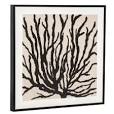The Evolution of Contemporary Art
Contemporary art is a dynamic and ever-evolving genre that reflects the cultural, social, and political landscapes of our time. It encompasses a wide range of artistic expressions, from traditional mediums like painting and sculpture to experimental forms such as installation art and digital media.
One of the defining characteristics of contemporary art is its emphasis on innovation and pushing boundaries. Artists working in this genre often challenge conventional norms and explore new ways of engaging with audiences. This spirit of experimentation has led to the emergence of diverse styles and movements that defy categorization.
Technology has played a significant role in shaping contemporary art, allowing artists to explore new techniques and modes of expression. Digital art, interactive installations, and virtual reality experiences are just some examples of how technology has transformed the artistic landscape.
Contemporary artists draw inspiration from a variety of sources, including current events, popular culture, personal experiences, and global issues. Their work often addresses themes such as identity, globalization, environmentalism, and social justice, reflecting the complexities of our modern world.
One notable aspect of contemporary art is its inclusivity and diversity. Artists from diverse backgrounds and perspectives have found a platform to share their voices and experiences through their work. This diversity enriches the artistic discourse and challenges viewers to engage with different viewpoints.
As we navigate an increasingly interconnected world, contemporary art continues to evolve and adapt to new challenges and opportunities. It serves as a mirror that reflects our society back to us, prompting reflection, dialogue, and transformation.
Understanding Contemporary Art: Definitions, Differences from Modern Art, Major Forms, and Key Characteristics
- What defines contemporary art?
- What is contemporary art vs modern art?
- What is the 7 major contemporary art?
- What are the 4 characteristics of contemporary art?
What defines contemporary art?
Contemporary art is defined by its focus on the present moment, reflecting the diverse and ever-changing world we live in today. It encompasses a wide range of artistic practices and mediums, often characterized by innovation, experimentation, and a willingness to challenge traditional boundaries. What sets contemporary art apart is its ability to engage with current issues, trends, and technologies, offering a platform for artists to explore new ideas and perspectives. Ultimately, the defining feature of contemporary art lies in its dynamic nature and its capacity to capture the essence of our modern era through creative expression.
What is contemporary art vs modern art?
In the realm of art, a common question that often arises is the distinction between contemporary art and modern art. While modern art refers to the artistic movements and styles that emerged in the late 19th and early 20th centuries, such as Impressionism, Cubism, and Surrealism, contemporary art encompasses the art created from the mid-20th century to the present day. Contemporary art is characterized by its focus on current issues, diverse forms of expression, and a break away from traditional artistic conventions. It reflects the ever-changing world we live in and often challenges viewers to rethink their perceptions of art and society.
What is the 7 major contemporary art?
The question “What are the 7 major contemporary art forms?” is a common inquiry among art enthusiasts and researchers seeking to understand the diverse landscape of contemporary art. While there is no definitive list of the seven major contemporary art forms due to the fluid and evolving nature of the genre, some commonly recognized categories include painting, sculpture, installation art, performance art, video art, digital art, and conceptual art. These forms encompass a wide range of artistic expressions and techniques that reflect the innovative and boundary-pushing nature of contemporary artistic practices.
What are the 4 characteristics of contemporary art?
Contemporary art is characterized by four key attributes that distinguish it from traditional art forms. Firstly, contemporary art often challenges traditional boundaries and conventions, embracing innovation and experimentation in its approach. Secondly, it reflects the diverse cultural influences and global perspectives of the modern world, addressing a wide range of themes and issues relevant to contemporary society. Thirdly, contemporary art frequently utilizes a variety of mediums and techniques, including digital technology and unconventional materials, to create engaging and thought-provoking artworks. Lastly, contemporary art is known for its inclusivity and diversity, providing a platform for artists from different backgrounds to express their unique voices and perspectives in the ever-evolving artistic landscape.





